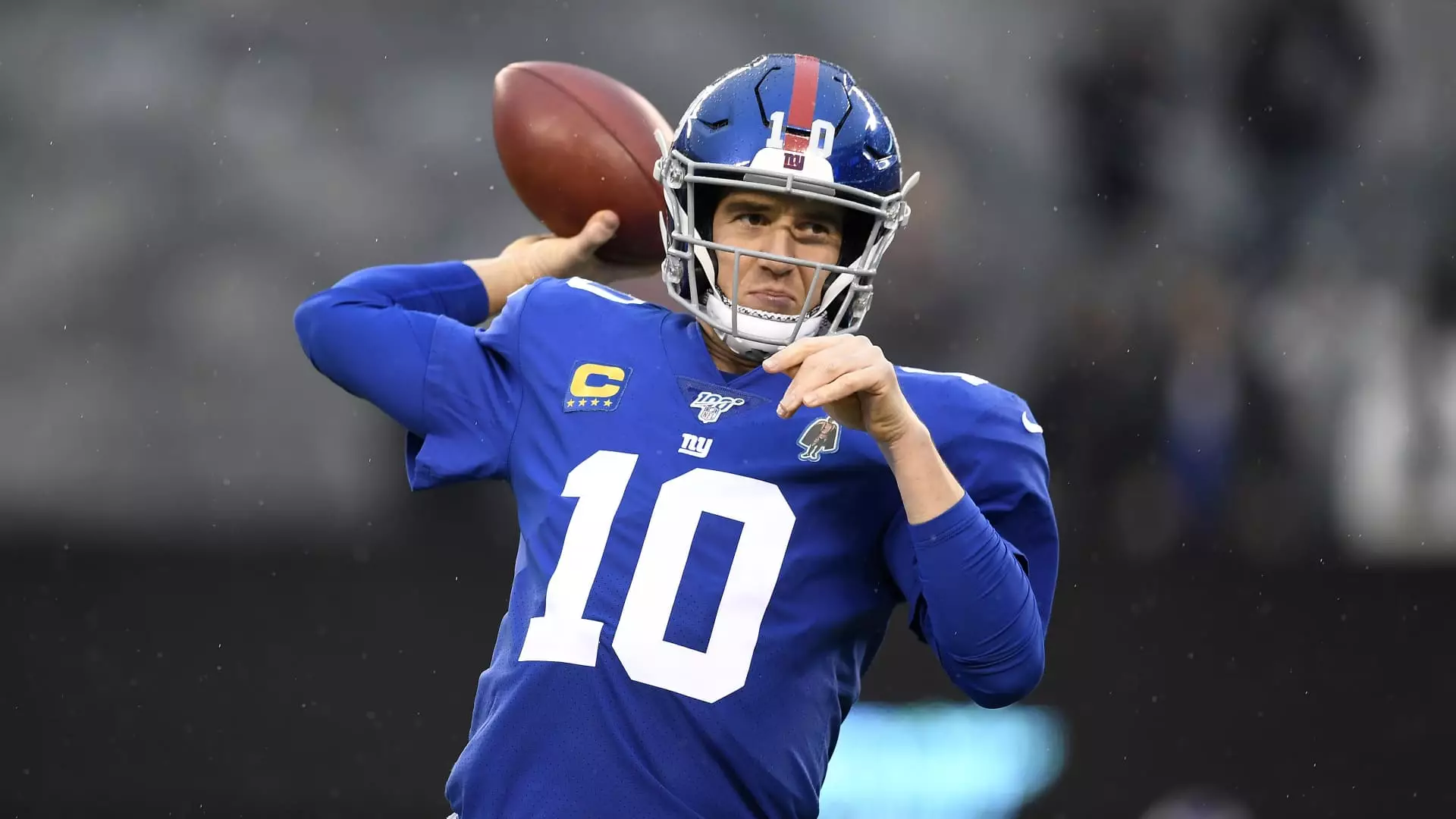Eli Manning’s recent declaration that he is unable, and perhaps unwilling, to purchase a minority stake in the New York Giants exposes an unsettling truth about the current valuation frenzy in professional sports. The rapid inflation of team values has created a bubble that, while benefiting existing owners and lofty speculators, starts to appear detached from economic fundamentals. Manning’s admission that a 1% stake valued at $10 billion is beyond his reach underscores an important point: the discrepancy between market valuations and actual investment viability is widening to unsustainable levels. As a former player turned investor-neutral observer, it becomes clear that the valuation explosion, fueled by media hype and passive investor interest, masks a fragile economic model that risks collapsing under its own inflated numbers.
The Bubble of Valuations: A Power-Driven Fantasy
In recent years, NFL teams have seen their valuations skyrocket. The Giants, valued at nearly $8 billion last September, are now perceived as worth far more, with recent sale benchmarks pushing past $8 billion and even closer to $10 billion for some franchises. Similarly, other sports franchises like the San Francisco 49ers and Los Angeles Lakers have commanded eye-popping figures. This trend feeds into a dangerous perception: that these assets are perpetual wealth generators immune to traditional market pressures. But how accurate is this optimism? Manning’s comment reveals that valuation figures are increasingly disconnected from the buyer’s reality, influenced more by speculative trading and media-driven narratives than intrinsic worth. The inflated valuations are less about genuine financial performance and more about an asset class that appeals to global elites seeking prestige and status, rather than sustainable profit-generation.
The Myth of Liquidity and Investment Opportunity
Despite the eye-catching numbers, the reality is that owning a percentage of an NFL team remains an extremely illiquid investment. Manning’s calculations show that even a small stake—something the Mara family and others have considered selling—requires hundreds of millions of dollars. For most investors, that’s a prohibitive barrier. Furthermore, as Manning pointed out, potential conflicts of interest—such as his commitments on ESPN’s ManningCast and coaching relationships—add layers of complexity that make such investments impractical. The notion that a sports franchise can be a straightforward asset for wealth consolidation is flawed; these are assets driven more by prestige and emotional attachment than by actual cash flow or asset appreciation that’s accessible to average investors. This highlights the growing divide between the illusion of rich-asset ownership and the concrete economic realities ordinary investors face.
The Market’s Temptation vs. Reality
The recent interest from private equity and billionaire bidders indicates that the luxury of owning a piece of sports royalty remains highly attractive. Yet, Manning’s decision to stay on the sidelines—and his candidness about the prices—expose a critical insight: the market is overestimating the true value of these assets. The valuation surge is largely fueled by a perception of exclusivity, a desire to associate with iconic brands, and the allure of profit in an industry that, at its core, is dependent on an ever-growing fan base and media rights. Failing to recognize the disparity between perceived and real value is perilous. Advanced investors and industry insiders must question whether these valuations are sustainable or if they will burst like previous asset bubbles before long. Manning’s stance offers a sobering perspective that, despite the glamor, getting involved as a minority stakeholder involves risks that go beyond the purchase price.
The Centralization of Power and Wealth in Elite Hands
The role of NFL ownership, wrapped tightly within negotiating power and generational wealth, becomes more evident through Manning’s refusal. The league is increasingly a playground for the ultra-wealthy, where valuations serve as a currency of status. Smaller investors, or even former players, find themselves priced out, making the league’s ownership landscape a closed shop for the financially privileged few. Manning’s ownership of minority stakes in the NWSL’s Gotham FC and a New York golf team emphasizes how athletic investment is becoming more about branding and lifestyle than genuine business expansion. The proliferation of high valuations should worry center-right liberals and pragmatic investors alike, as it underscores a concentration of economic power that poses systemic risks—market dependence on a small elite class that benefits from artificially inflated valuations while sidelining broader economic participation.
In essence, Eli Manning’s candid rejection of a multi-billion-dollar stake reveals more than individual prudence; it exposes the underlying fragility of today’s sports franchise valuations. The obsession with maximizing market value at any cost distorts economic realities and risks turning championed assets into bubbles that threaten to burst—potentially dragging the entire sports industry into financial disarray. The true question remains: are we investing in genuine growth, or simply betting on brand hype driven by moneyed elites seeking social prestige?


Leave a Reply